Capturing high summer in the fennel forest
Tasting what the bees taste in my favorite weed-covered park
No one visits the fennel forest in August.
At the southern end of Willamette Boulevard, which undulates along the bluffs above the river of the same name, a C-shaped curve frames a wide ledge 20 feet below the level of the road. I have no idea how long the ledge has been called the Dog Bowl, but from fall to late spring, it swarms with dogs and their people. In the wet months of the year, an inchoate pattern of paw prints covers the muddy bottom of the bowl. When we get heavy snows, every kid in Arbor Lodge grabs their plastic sleds to rocket down the Bowl's steep slopes.
During the gold-brown months of Portland's Mediterranean summer, the Dog Bowl becomes a fennel forest dotted with dark-green hillocks of blackberry brambles big enough to hide, or eat, a Great Barnard. And all the dogs disappear.
I don't have a dog, and so last year I began making regular trips to the Dog Bowl when the humans of abandoned it and the park reached peak fragrance: an acre of seven-foot-high wild fennel, topped with discs of bright-yellow flowers that swayed as if they were too stoned to dance. Last year I wrote about gathering blackberries from the Dog Bowl, then returning in the fall to collect seeds for wild-fennel biscotti. Now I return to the fennel forest to bask in the smell of 100,000 fennel flowers baking in the sun.
I didn't know why the dogs disappeared until last month, when my neighbors took their yellow lab to the veterinary emergency room -- twice -- to remove foxtails that had burrowed into his ear and pierced his eardrum.
If you don't live own a dog, you may not know just how pernicious foxtails have become: invasive grasses with wheat-looking seed pods that detach with the slightest touch. They burrow into toes and eardrums and chests, working their way deep into the body, maiming and killing along the way. The Dog Bowl is covered in foxtails. Everyone else stays away.
Larry the Dog's ear surgery wasn't the only reason the emptiness of the plateau had lost some of its enchantment when I return for blackberries and fennel flowers this year.
When I looked into the origins of Oregon’s wild fennel, I learned just how invasive a species this European import is. Now, after a year of continuing research, it has become clear that the entire Dog Bowl -- aromatic and succulent, sweetness hidden between every barb -- is populated by rapacious invasives. The mats of golden fescue that died with the spring rains. The stands of Himalayan blackberries. The hot-pink ribbons of sweet pea flowers that ripple along the road. Only the larger trees, the evergreens and white oaks, have managed to survive the European invasion.
It is a sobering beauty, this remade landscape, and yet I can’t help but inhale its fragrance. I have company, of a sort: Bees, wasps, and hornets love the smell of the fennel forest as much as I do. They orbit around me and despite me as I gather blackberries.
It takes restraint to make it out of a thicket of Himalayan blackberries with berries instead of blood. A hornet buzzes my head until I heed her warning and move away. I feel a sharp pain in one foot, and remove my tennis shoes to find a foxtail has plunged through one of the eyelets to get to my flesh. I remove it just before it breaks the skin.
Walking back up toward my house, I also gather several dozen sprays of fennel flowers, apologizing to the bees as I snip. Even as I boil the berries down with the bright yellow flowers and strain the syrup to make blackberry-fennel-flower jelly, I can't stop thinking of another invasive that covers the park.
Up to now, I have avoided all contact with Queen Anne's lace -- wild carrot, Daucus carnota -- because of all the warnings. Make sure it's not poison hemlock, posters in my foraging Facebook constantly advise. The two species do look identical in spring. But most practiced foragers can tell the difference. Peel the stalks of Queen Anne's lace in the spring to crunch on like celery, the foraging YouTube videos suggest. Dig up the wild carrot roots in the fall, when the cold has replaced some of the bitterness with sugar. Pluck the flowers for syrups and jellies.
The idea of making Queen Anne's lace jelly nags at me until I spend several hours googling "How do I tell Queen Anne's lace apart from poison hemlock?" I memorize the three most disctinct signs: Fuzzy green stems, as compared to hemlock's smooth and purple-splotched ones. A ring of three-pronged bracts beneath the flower clusters. And one tiny purple bud at the center of each white flower ring.
My husband tells me he's going to opt out of this particular experiment, but I return to the Dog Bowl the next day, scissors in hand. I study each flower cluster before I cut it off. Stem, bracts, purple dot. Snip. Stem, bracts, purple dot. Snip. At home, I snip off the flower stems and pour boiling water over the tufts of tiny white flowers, which smell almost cloyingly of carrot, soap, and chestnuts. I leave the tea overnight, then strain it.
Finally, I am ready to make both landscape jellies. To the viscous, purple blackberry-fennel juice I add only a little water and sugar, stirring in just a few tablespoons of low-sugar pectin at the end of the boil.
For the Queen Anne's lace counterpart, I follow Ashley Hetrick's guidelines for flower jellies, adding lemon juice, sugar, and regular pectin in the order her recipe describes. A few tablespoons of lemon juice turns the syrup the color of southern French rosé. Once the syrup bubbles up, the offputting carrot aroma metamorphoses into pure honey, shedding its vegetal origins as doggedly as a Midwesterner who moves to San Francisco and changes their name to Alabaster.
These days, my trips to the fennel forest are shadowed with what woulds. What would this park look like if we replanted it with natives? What would we lose? What would we gain? And yet I’m drawn back to it over and over again, hornets, foxtails, thorns, and all. The jellies turn out to be some of the loveliest things I've made this year, just wobbly and viscous enough to linger on the tongue, slowly unveiling their floral aromas: the transparent fennel halo that hovers above the deep berry sweetness, the fragile prettiness of the Queen Anne’s lace flowers. I feel like I should consume them in tiny spoonfuls — just another bumblebee nipping at the sprays of fennel and wild carrot, unconcerned with whether they belong there, drunk on yet another perfume.


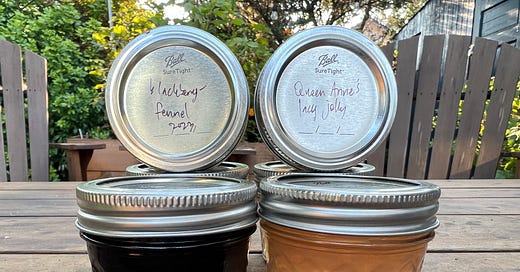



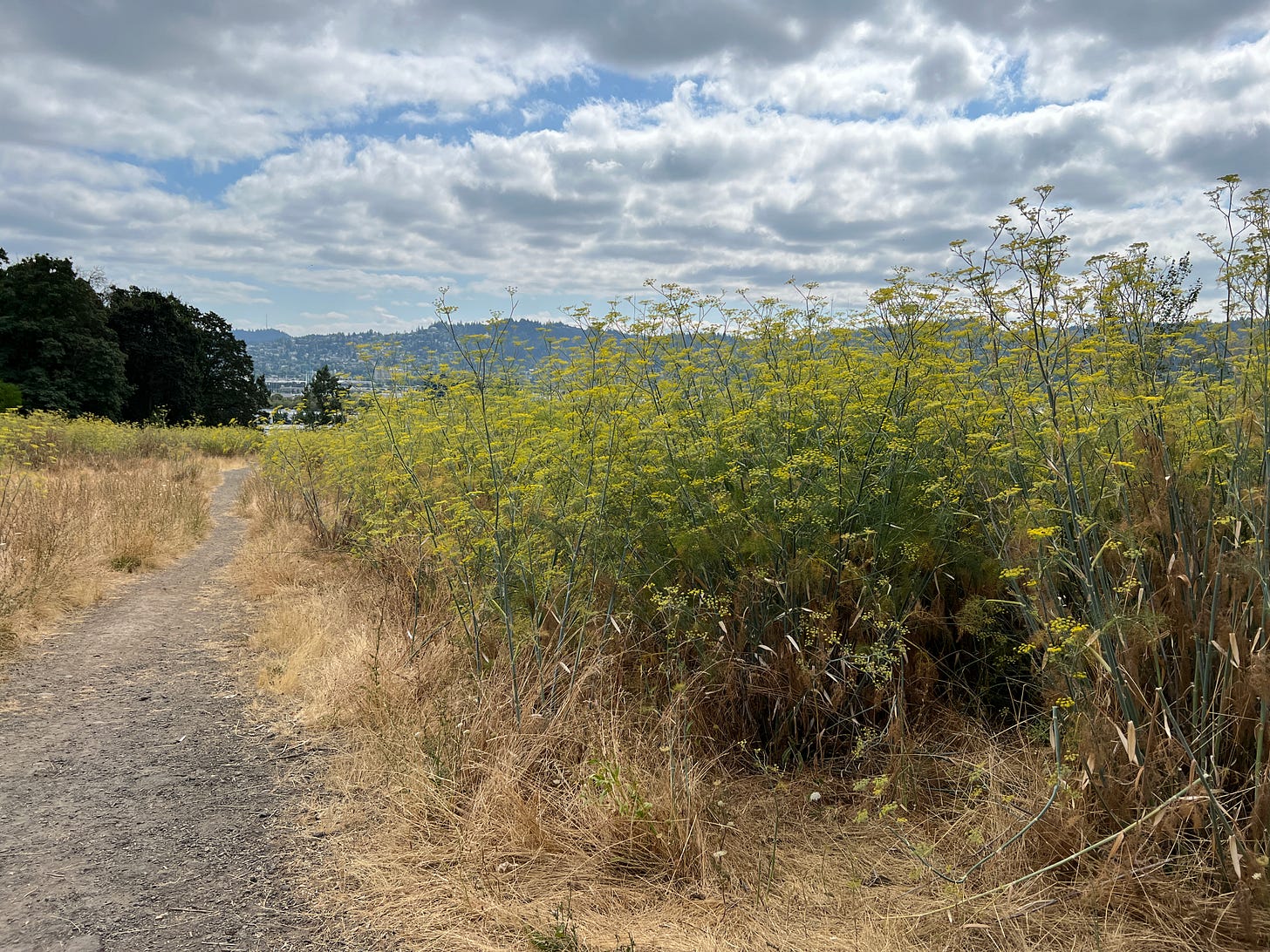
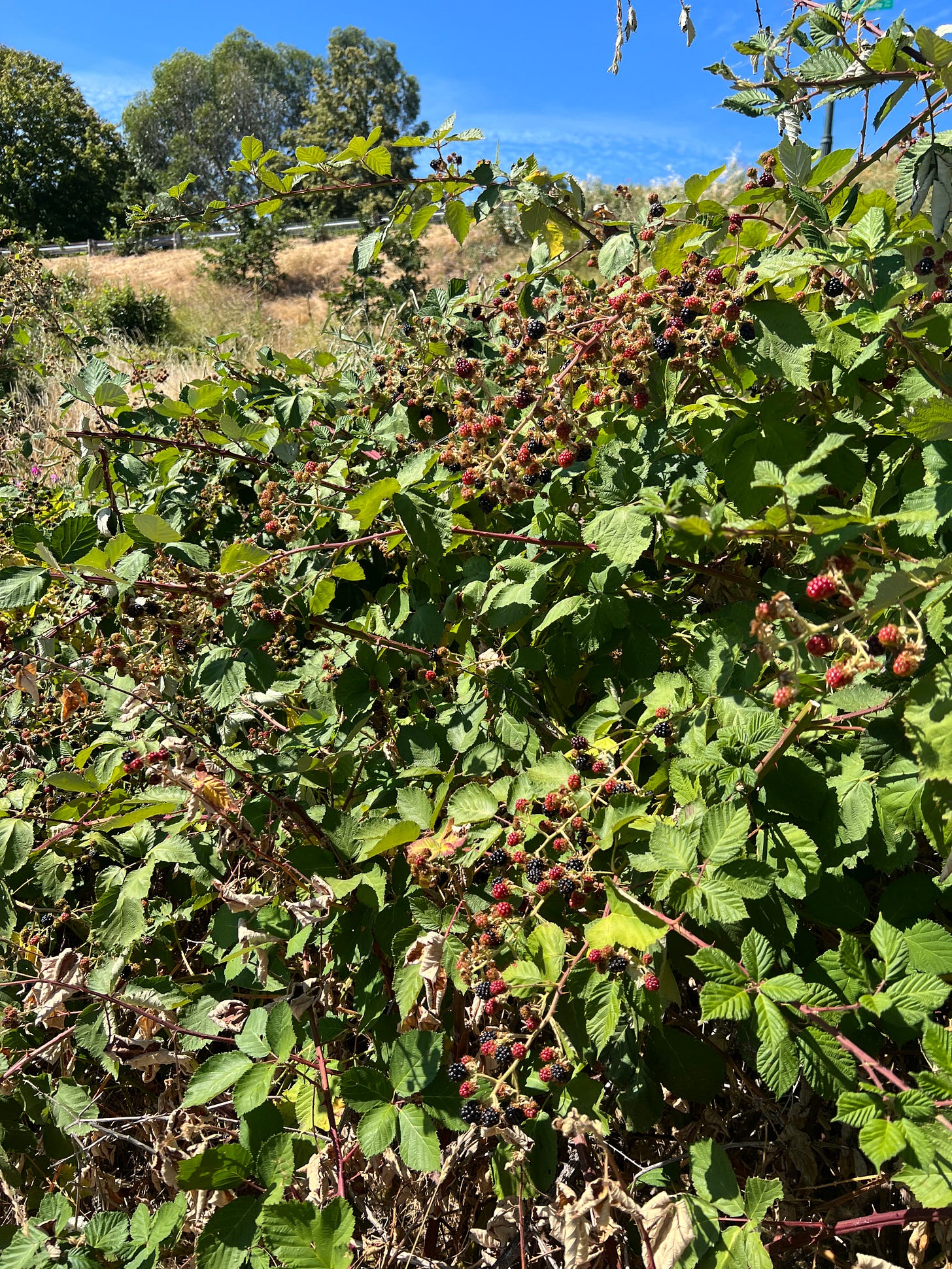
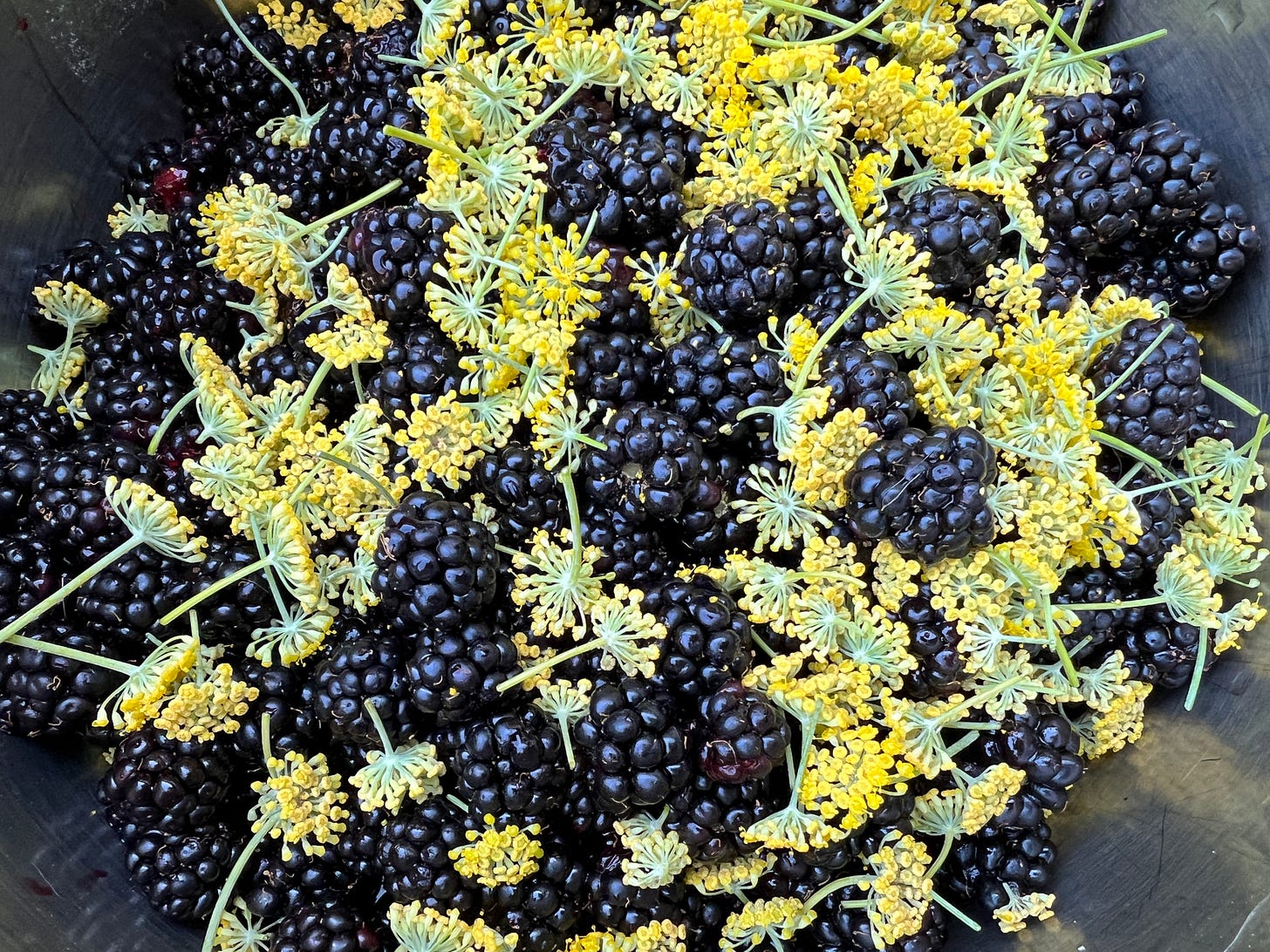
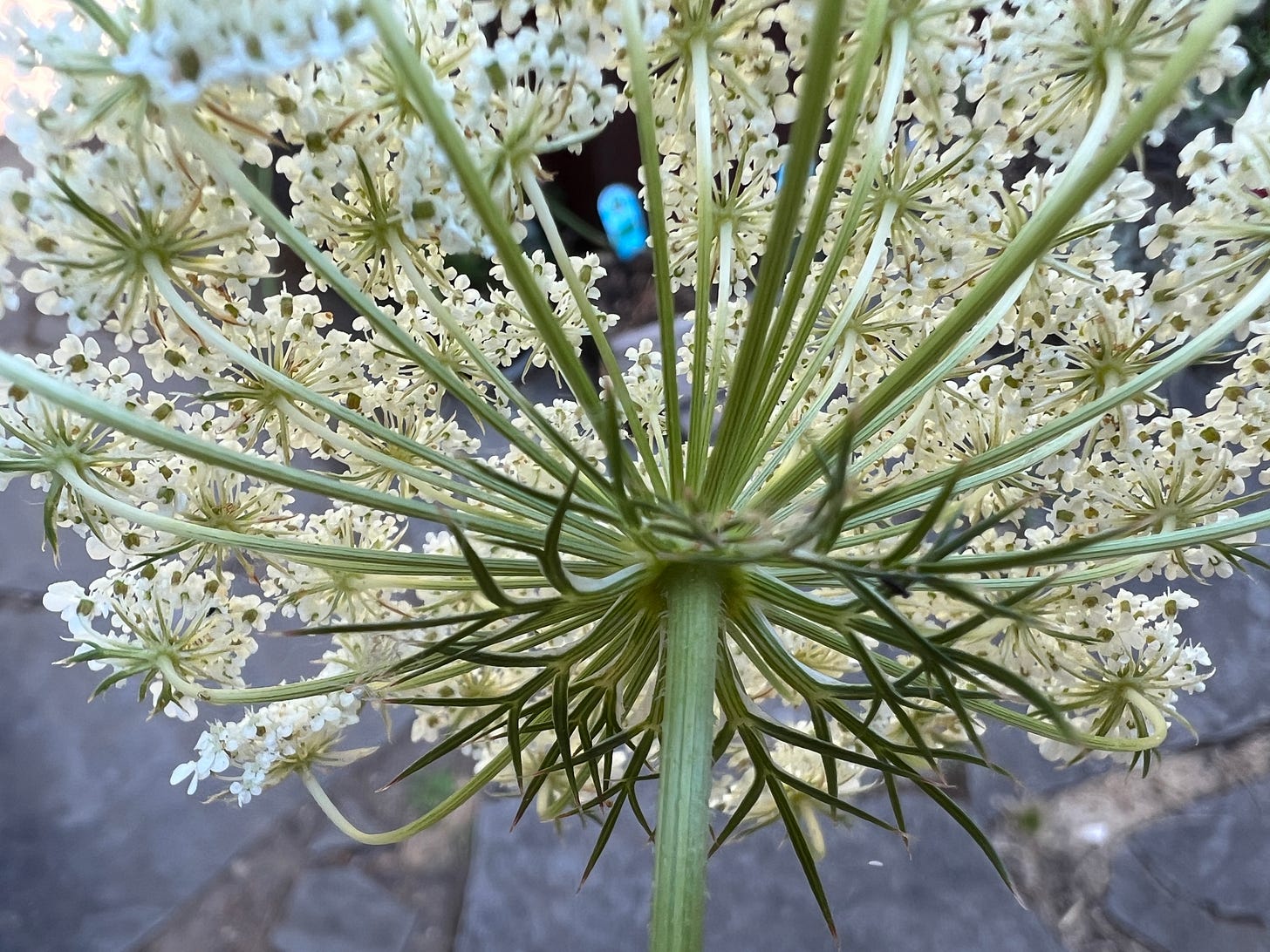
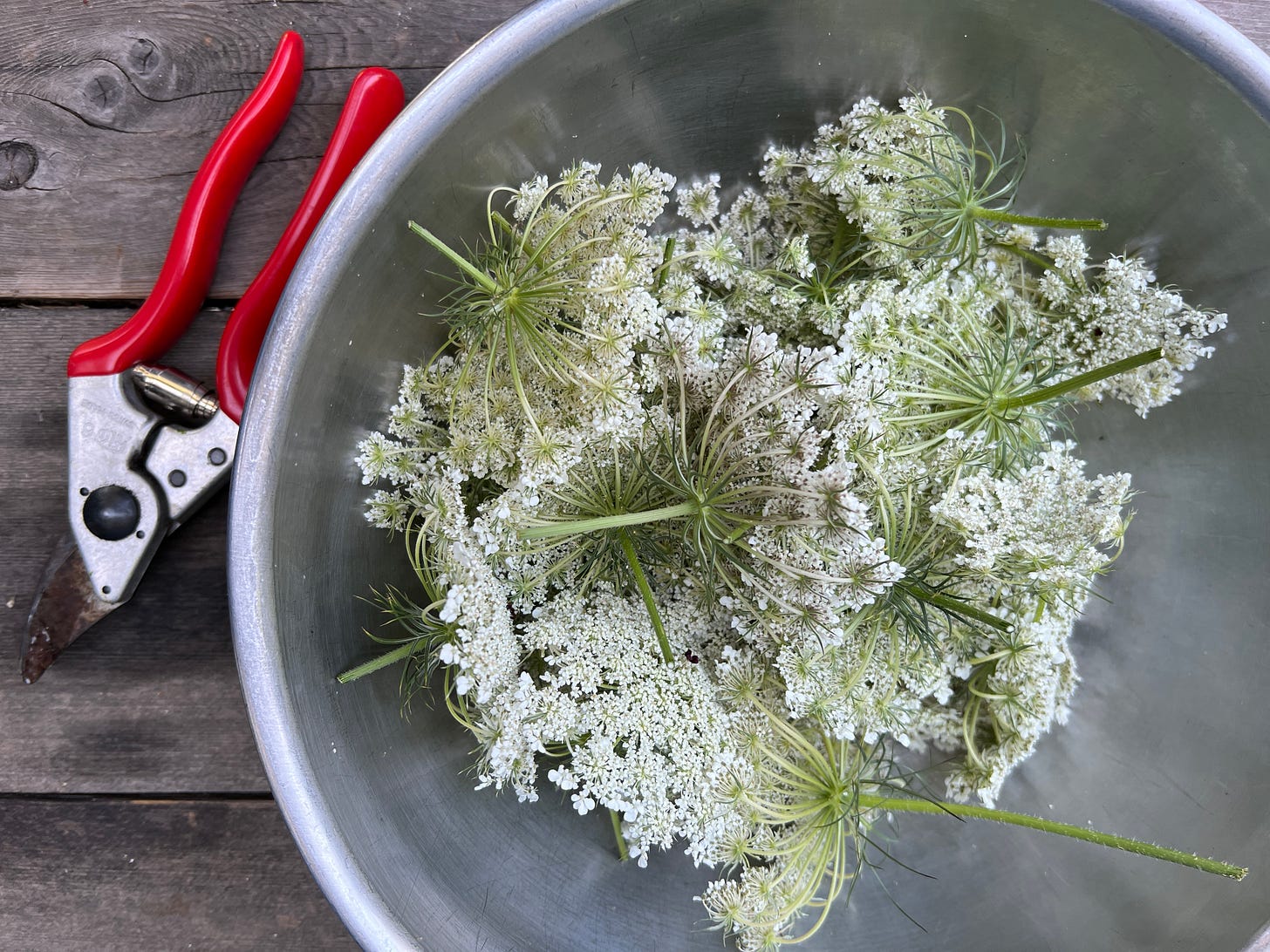
Foxtails are the worst!
I never considered the poison cousin of Queen Anne’s lace! Lots of good stuff in this post
I live a few blocks north of you in Kenton, and I have a lot of fennel volunteers in my parking strip garden, and after some complaints from neighbors, I pointed out that while in bloom, the plants are filled with bees and butterflies, and after it goes to seed, we have flocks of tiny birds that come to feast.